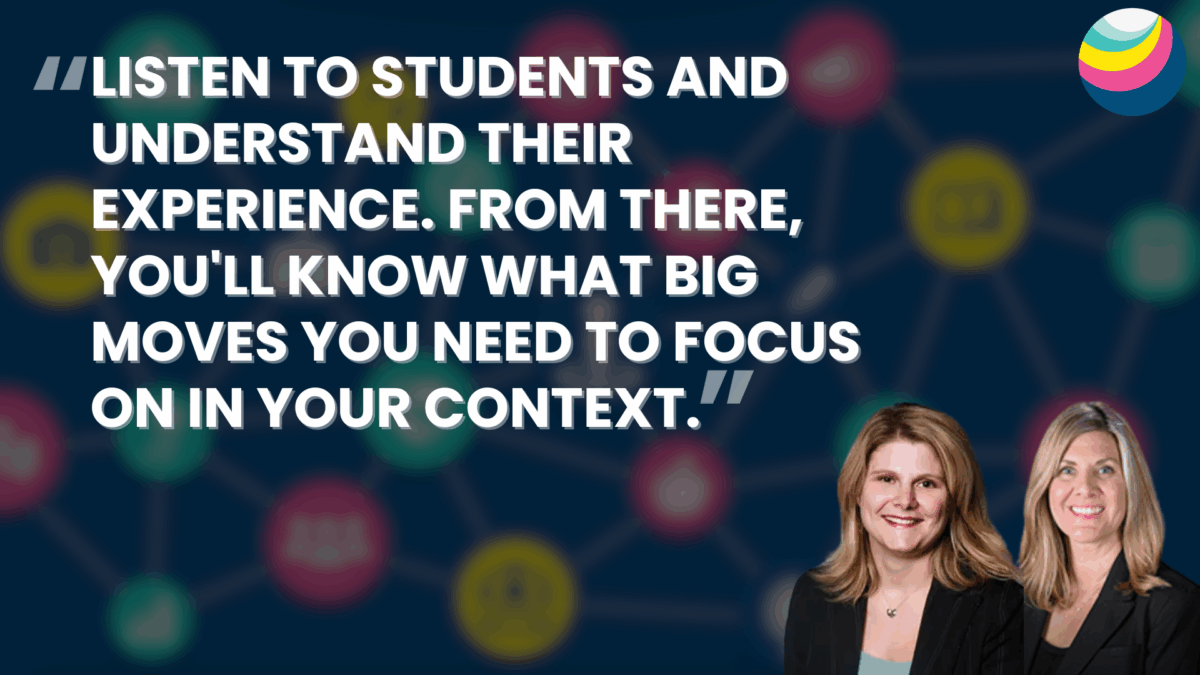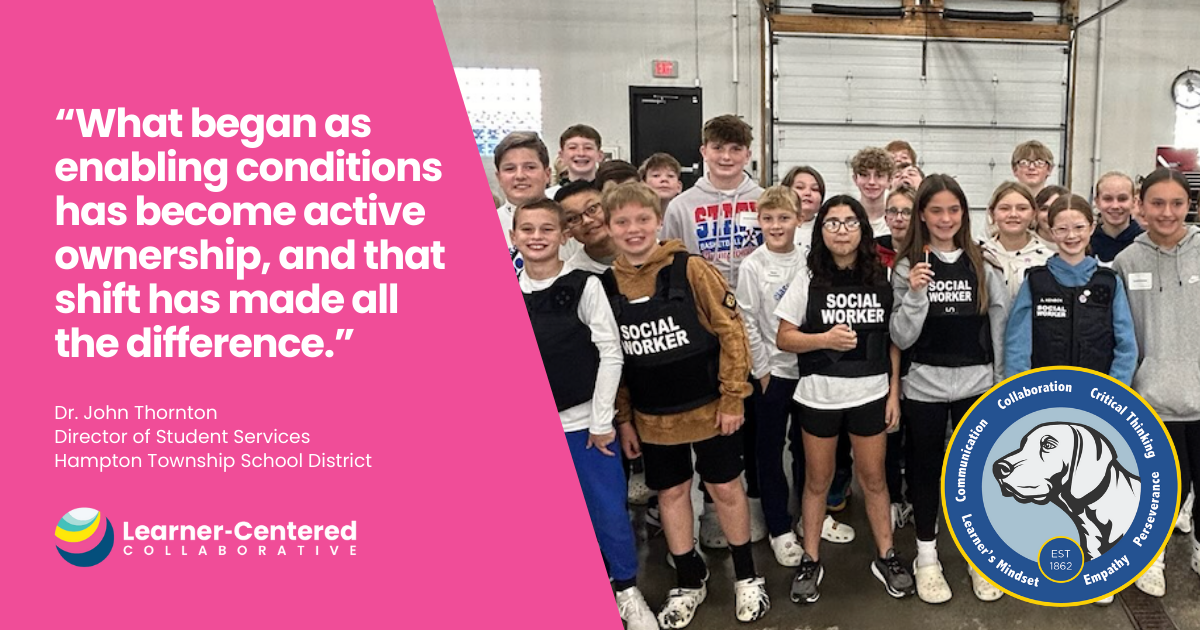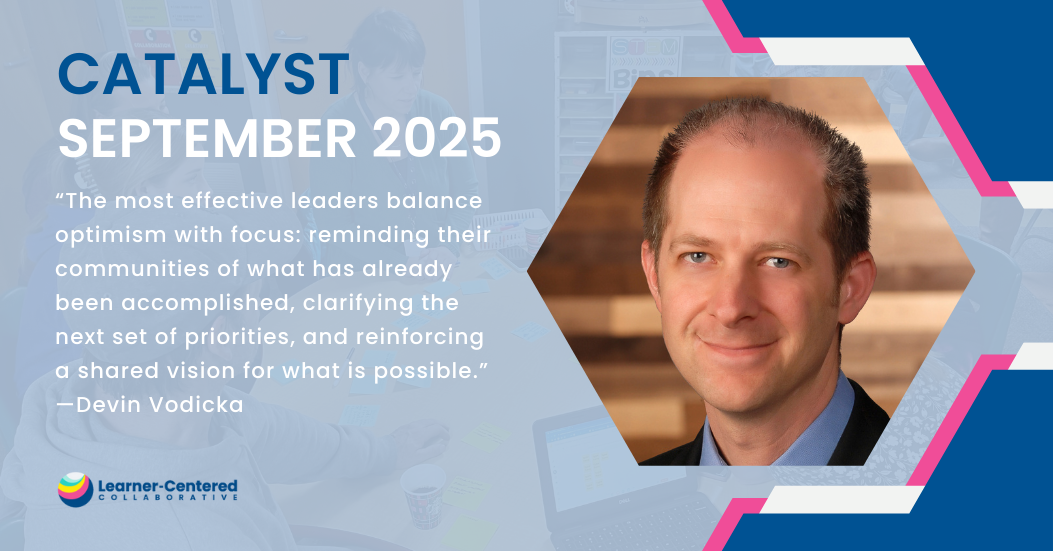Lessons and Reflections from a Learner-Centered Year
As a collaborative organization that works deeply with a wide range of US partner schools and districts we’ve had a unique vantage point this year as educators have evolved their roles and developed new teaching practices and identities to meet the needs of learners. We continue to learn and grow as do our students. We have worked with students, educators, and families to leverage the uncertainty to prioritize what matters most and create new and better ways forward. The end of the year is always a time for celebrating Bright Spots and reflecting on our learning. As we’ve reflected, these 7 priorities have emerged across different learning communities—regardless of size, location, or type of school—as they shift to a more learner-centered paradigm.
1) Focus on educating the whole child, including both social-emotional learning and academics
One effective strategy we’ve worked on with partners this year is creating a learner profile that defines the skills, knowledge, and mindsets that you want learners to develop. This helps identify the broader goals and guides decisions around learning experience design and resources. It is also necessary to move from overwhelming lists of standards and surface-level curriculum to prioritize the standards or competencies that matter most.
2) Ensure Equity and Access for Each and Every Child
The National Equity Project defines equity as: each child receiving what they need to reach their full potential. Learners have always been in different places and the pandemic has exacerbated gaps while also calling upon learners to develop new skills and dispositions. This means that some learners will require additional support, guidance, and feedback to meet the desired goals. Others will need the freedom to move beyond what they have already mastered. We need to prioritize our goals, understand where learners are, and then align support and resources to meet learners where they are and help them move forward.
3) Create Competency-Based Systems for Learning
A standardized education system is designed to move kids along a certain path at a certain period of time and often ignores the variability in learners or their circumstances. In a competency-based system, the learning goals are clear and transparent to the students, and instruction, resources, learning experiences, and assessment are leveraged to meet the learner where they are and help them navigate their path.
This shift in assessment requires a different view of the role of the teacher, which shifts whole class lessons to more small group instruction, 1:1 check-ins, and peer collaboration to move learners from their point a to their point b. We’ve been fortunate to collaborate with partners such as Menlo Park City School District, Embark Education, Mount Vernon School, and Odyssey STEM Academy who are actualizing a competency-based model of education in their context.
See how two public charter schools are Collaborating to Scale and Sustain Competency-Based Learning.
4) Develop and Facilitate a Community of Learners
Collaboration and connection are vital to our academic success as well as our social-emotional well-being. They can occur more naturally in our face-to-face environments, which is why we have to be more intentional about creating the conditions for this to happen when we are remote.
Creating a community of learners to connect and collaborate with one another will be what keeps learners coming to class and what will sustain more powerful learning over time. People learn from one another, through observation, imitation, and modeling. We learn how to act and react to situations from others. When learning environments are organized to facilitate positive interactions and are designed to foster connection and collaboration, the community benefits from the collective expertise.
Partner Success Lead LeShae Daniel makes the case for Why You Should Say “Yes” to Your Next Community of Practice.
5) Create the Conditions for Learner Agency
We often hear people equate learner agency with “doing whatever they want.” Agency is by definition the power to act, but this doesn’t have to be misconstrued as a free-for-all. We all operate within constraints, but we don’t have to all do things the same way to reach the intended learning targets and goals. Educators have certain expectations they are accountable for teaching and there is a variety of content and skills that we want students to learn. Within the constraints, there can still be opportunities for learner agency, which requires learners to set goals, initiate action towards those goals, revise and reflect, and develop the confidence and competence to continue to learn and grow.
We have been honored to work with a variety of partners from South Kitsap District in Washington, Santa Ana Unified in California, and with the Utah Board of Education to deepen understanding of learner agency and to create the conditions for learners to navigate their learning journey.
Check out 3 High-Impact, Low-Lift Ways to Foster Learner Agency.
6) Focus on Work That Matters
Ron Berger reminds us in this article that, “when we finish school and enter the world of work, we are asked to create work of value—scientific reports, business plans, websites, books, architectural blueprints, graphic artwork, investment proposals, medical devices and software applications.
We are inspired by our partners like Spark Online Academy in Colorado, the personalized learning schools in Dallas ISD, and SEEQs in Hawai’i who are creating projects and opportunities to present to an authentic audience which pushes them to take the basic skills and the standards they are learning and use them in a context that matters. When the work is authentic and purposeful, students not only learn and improve in reading, speaking, writing, and communicating, they also become more motivated learners
7) Empower People (Not Programs) to Drive Change
Over the last 2 years, we have seen one-to-one access become a norm (yet still not ubiquitous). Vast amounts of digital tools and programs have supported learners in diverse contexts, but they are not solutions in and of themselves. Innovation and change start with people and are supported by technology. It’s the people who connect with one another, build relationships, and provide effective feedback to one another. It is the educators who understand the needs of their students and community and can create experiences that are aligned with their goals, context, and needs. It’s the people, not the programs who are capable of the changes we seek in education.
We are grateful for all the work happening in our learner-centered community and look forward to continuing to collaborate and learn together to create the conditions and learning experiences that empower all learners to know who they are, thrive in community, and actively engage in the world as their best selves.
Onward to continuing our work together with learners at the center in 2022.
With Gratitude,
Devin Vodicka and Katie Martin





